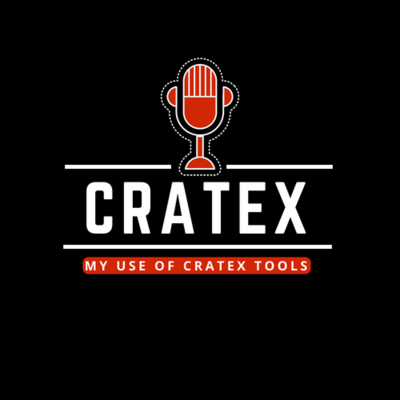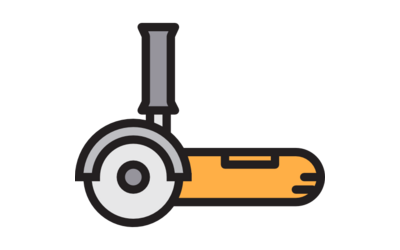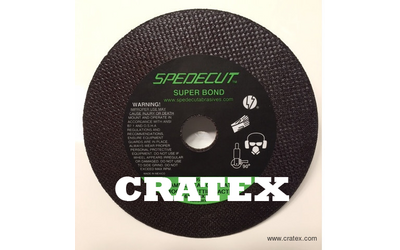
We use your product on our chop saw to cut wire rope and chain. We sell overhead lifting materials and rigging products.
Customer's Pick: QS1386, 10", A60TBXX
Free UPS Ground shipping on all online orders over $149
There are two main stages of cutting metal: rough cutting and finish cutting. The purpose of roughing cuts is to remove large amounts of material from the workpiece to create a shape that closely resembles the shape you intended to create. The purpose of finishing cuts is to further remove material to create the exact shape you intended to create.
No matter if you are a fabricator, a welder or constructor, you're going to have to cut metal at some point for your project. At this point it will be crucial to choose the right tool for the job you are performing, because the wrong tool can mess up your project. And you don't want that.
Metal-cutting technology is essential in today's era and it requires skilled craftsmanship. The technology has evolved over time, so today we can find many different advanced metals cutting tools, designed to provide precision and speed. Despite the evolution and new technologies, you won't see a metal workshop with some of the most basic hand metal-cutting tools.
This article will help you choose the right tools for your metal-cutting needs by presenting most common metal-cutting tools, show you how to cut metal and present CRATEX offer of high-quality cut-off wheels – Spedecut "True Bond" and "Super Bond".
If still puzzled about the right type of cutting tool for your next project after reading this article, make sure you consult an expert, distributor or the manufacturer.

Metal Cutting Tool

Metal Cut-Off Wheel from CRATEX

7 Simple Ways How to Cut Metal

How To Cut Stainless Stell
Metal-cutting tools are tools that you'll use to remove material from a metal workpiece through shear deformation. You can cut metal with a single-point or a multi-point tool and using the right one is essential when cutting any kind of metal.
The most important features of a metal-cutting tool are toughness (resistant to fracture or chip), hardness (resistant to heat) and long working life (wear resistance). Other important features are the angle of the cutting face, the number of teeth (TPI) and the teeth width.
Important for a metal-cutting tool is to be made of material that is harder than the material that needs to be cut, as that will ensure the tool will withstand the generated heat. Therefore, choosing the right metal cutting tool depends on the composition of the metal, the material size, the desired characteristics of the cut and the intended use of the workpiece.
The key to cutting almost any kind of metal is to match the blade to the metal. Since there are two types of metal, ferrous (containing iron) and nonferrous (most common are aluminum and copper), most cutting blades and discs are labeled for cutting either the first one or the other.
There are three methods to cut metal:
As for different metal cutting power tools, there are a lot that you can choose from. Some are easier to use, some require more skill, some are faster and some slower. Nevertheless, all tools have the same purpose – to help enhance the precision and speed of metal fabrication work.
We created a list of 10 metal cutting tools that are most commonly used in a garage of an average metal worker, so check them out below.
Sheetmetal snips are hand tools used to cut flat sheets of thin metal, sothey won't help much with cutting sandwiched layers of sheet metal. With snips you can make a nice straight cut or quite delicate curves.
They often leave sharp, ugly edges that require a lot of work to smooth over, so be careful with metal workpieces that can be easily ruined (car body metal). They are rather used for duct work or quickly cutting metal patch panels.
Sheet metal snips are typically sold in sets of three: a pair of straight, clockwise and counter-clockwise cuts.
There are two broad categories of sheet metal snips:
Price: $10 - $40 (per piece)
Hacksaw is the most basic and commonly used hand tool for cutting metal and if you choose the right blade for your job, it will deliver maximum efficiency and cutting performance. It does however require a lot of muscle and patience.
The tool looks like a C-shaped frame that is attached to a pistol-grip handle, with a thin, slightly flexible blade that runs across the open portion of the frame. Standard hacksaw blades are 10-12" long, and the blade can be as small as 6".
The number of teeth per inch (TPI) is important for obtaining desired results. For example, hacksaws with blades that have small, dense teeth are designed to provide fine cuts through soft or thin metals, such as aluminum and copper without getting hung up in the material.
On the other hand, blades with large, widely spaced teeth allow more material removal and clean-out with each saw stroke. They are suitable for coarser cuts through hard or thick metal, such as steel or iron.
Here is an overview of TPIs suitable for various metals and thicknesses:
Some of the most famous hacksaw blade brands are Starrett, Stanley, Nicholson, M.K. Morse, Milwauke and Klein.
Price: $5-$20
Angle grinder is one of the most useful and affordable fabricator tools aside from a drill. You can use different types of abrasives that are designed for different applications: cutting, grinding and sanding.
One of the main advantages is that an angle grinder can cut or grind any metal regardless of its hardness, which is something that even the most expensive saw blades can't accomplish (e.g. 0.045" wheels will cut through pretty much any thickness of steel).
Angle grinder is a rough cutting tool as it can require a lot of arm strength and control, because the tool can bind and jump off the workpiece, which can cause damage to the surrounding area. Also, since the spinning of the cutting wheel will create heat in the metal, make sure you are not using the tool to cut through painted metal or any metal workpiece that needs to maintain its look after cutting. Since your workpiece will require some cleanup and smoothing, angle grinder is best used on raw steel projects.
Price: $40 - $80
Metal chop saw is a one-wheel cutting tool that rests on a stationary base. To use it, you'll place the metal workpiece on the base beneath the blade, activate it and lower it through the material.
It is a raw and inexpensive tool. Since the cuts are usually not very square and cutting can get messy, the tool is efficient and more suitable for rough cutting. Also, the chop saw makes a lot of sparks that get shot everywhere, especially straight across the room along with abrasive dust and metal bits, so it's a tool that is more suitable for outdoor use.
Most chop saws use 14-inch abrasive cutting wheels. You can find them almost anywhere and for under $10. The lifetime of a chop saw wheel is hundreds of cuts before it wears out.
Price: $100-$200
Die grinders are something like miniature angle grinders that can be used with various attachments such as small drill bits, small endmills, small abrasive cut-off wheels or small disc-shaped saw blades. The cutter is usually held in a collet, which allows quick change of cutters.
The tool is widely used for all sorts of cutting and grinding operations by welders, sheet metal workers, millwrights, ironworkers, boilermakers and many others. One of the advantages of die grinders is that you can make sharper turns, because it has a smaller blade.
It is a perfect tool for complex and detailed work and getting into tight spots. You can use it for cutting bolts, bad welds or tack welds. If you are cutting aluminum, use cutting oil or wax to prevent the sharp edges of the tool from becoming clogged with metal.
Price: $20 - $60
Sawz or reciprocating saw is basically a hacksaw with motor on it. It is an aggressive cutting tool with a whole lot of power and is therefore, not suitable for precision cutting, as you'll have trouble making both a clean and straight cut, especially in sheet metal. It's rather used for trimming reinforced areas of multiple metal sheets that are spot-welded together and is the ultimate power hacksaw for cutting pipes, bolts, rods and angle iron.
It can cut thick or thin metal and thanks to its shape, get into tight spots. The saw blades tend to bend (with is great for getting into tight spots) and therefore, break a lot, so make sure you always have plenty for backup. Use these guidelines when buying a recip saw:
You can choose between corded and cordless models. If you are going for a corded reciprocating saw, go for at least 9.5-amp motor, and if a cordless model is more convenient, keep in mind that more volts mean more cutting power. If you want to decrease the weight of your tool, look for a model with lithium battery. Lithium batteries also prolong the running time and have longer battery life.
Price: $50 - $130
Jigsaw is a power tool that has a motor and a reciprocating saw blade. It was originally designed for wood, but it can be used to cut 1/8-" mild steel, no-iron pipe and sheet metal up to 10 gauges thick. You'll just need to load it with the appropriate bi-metal blades (bi-metal blades last 10 times longer and are less likely to break)
There are different types of jigsaw blades with different number of TPI. For example, for cutting sheet metal you're going to need a finer blade with 21-24 TPI, and you'll need about 14 TPI blade for cutting pipe and mild steel.
Also, there is a blade edge for cutting soft materials, thin blades for cutting tighter curves, push stroke cutting blades that avoid damaging the top surface, cranked blades to allow flush cutting.
The downside of jigsaws is control. Since the blades are weak and unsupported at the lower end, you'll need blade rollers to achieve good cut control.
Price: $30 - $150
A circular saw is a very common cutting power tool used for creating straight, very accurate cuts through most types of metal that are up to ¾" thick (this means that you can easily cut a welding table in half with one of these things). The saw is typically fed into the workpiece horizontally while the material is held in place by a vise.
The circular saw can be a great metal-cutting tool if fitted with the right blade. There are two types of wheels that are used: abrasive wheels for cutting solid bars or tube stock, and steel saw blades for cutting aluminum. Steel blades are inexpensive, so although carbide-tipped abrasive cut off wheels are more expensive ($8 - $40), they last up to 10 times longer. Carbide-tooth blades can be used for non-ferrous metals, such as brass, copper, lead or aluminum.
Price: $40 - $150
Air saws are ideal for trimming and general cutting, because they are small, light and maneuverable. It does however take some skill to cut a straight line, but it's not impossible to learn. The tool is not suitable for thicker materials, such as sandwiched spot-welded sheet metal, as they will slow the air saw down and quickly chew up the teeth on the blades.
You should rather use more powerful tools for the thicker materials (angle grinders or reciprocating saw) and finish up with the air saw. All you'll need to do after that is run a file over the freshly cut surface to smooth rough edges.
If you need to cut painted material, simply mask the area with 2-3 layers of masking tape to protect the paint.
Since air saws consume a moderate amount of air, you'll need to make sure your compressor can keep up – the saw's consumption needs to match the compressor output.
Price: $100 - $130
Cut off tools are perfect for precision cutting and trimming. They are most suitable for smaller jobs and thinner materials thanks to their size and design. You can also use the tool as a mini grinder for working in tight areas.
Trimming painted metal with this tool isn't quite recommendable, as there is a possibility of burning the paint.
Price: $20 - $70
Spedecut abrasives have been on the market for about 80 years and for that time they became well-known and respectable for their dependable quality, performance and cost-efficient products.
Spedecut "True Bond" and "Super Bond" cut off wheels are double reinforced with fiberglass layers on both sides to provide ultimate safety in the thinnest wheel while performing straight cutting. The aluminum-oxide formula offers longest lasting wheel life and fastest cutting performance.
Spedecut wheels are designed to deliver maximum performance and exactly what you need from your cut-off wheels when cutting all types of ferrous and non-ferrous metals - superior durability, flexibility, rigidity and toughness.
Thanks to the wide variety of products, Spedecut is the preferred cutting wheel in numerous industries, such as:
Since the Spedecut products are designed to deliver maximum performance, we pay special attention to their shipping and storage containers. The heavy-duty packaging assures safe delivery of Spedecut products to our customer's doors.
Regardless of your cutting requirements, Spedecut has the right wheel for the job at the right price. And the more wheels you need, the better the price, so make sure you check out Spedecut wheel rates for different quantities!
The double reinforced resinoid Spedecut TB "True Bond" cut-off wheels help you get the most out of your power cutting tools. They range from 1" to 10" in diameter and are available in 4 standard grades:
The maximum number of rpms varies from as high as just above 61,000 for the smallest wheels to a little over 6,000 for the largest wheels.
Large Spedecut wheels have double high-tensile strength fiberglass reinforcement on both sides, which provides fast, efficient and safe cutting performance.
They are available in our CRATEX online store in sizes 5" to 10" in diameter and they’re made in different grades which ensures handling of any application across fabricating and construction industries.
Large TB "True Bond" wheels are available in 3 standard grades: medium-coarse, medium-fine and fine.
There are also Large TB Treated Double Reinforced wheels available as medium-coarse (high-volume general-purpose shop use on medium to low HP equipment to cut tubing, angle and bar stock), medium-fine (heavy-duty, clean cutting on low HP equipment) and fine grades (cool burr-free cutting).
Spedecut TB Large cut off wheels are sold in packs and the number of pieces in a pack depends on the exact product. For example:
There are different rates for shopping in bulk and the discount and quantity ranges differ depending on the model.
Spedecut small TB double reinforced wheels will help you get the most from your handheld air-driven or electric power tools. They are a true industry standard for fast, clean straight cutting.
They are available in our CRATEX online store in standard diameters from 1" to 2-½" and thickness from 0.35" through ½".
Small TB wheels are available in all 4 standard grades: coarse, medium-coarse, medium-fine and fine.
The shellac SB cut off wheels are available in our CRATEX online store in diameters ranging from 3'' to 6'', thickness 0.40'' and 1/16''. The maximum number of rpms ranges from 25,000 for the smallest wheels to just over 10,000 for the largest.
SB wheels are available in packs and the number of pieces in one pack depends on the exact model. For example:
Double reinforced SB 3"-5" cut off wheels provide maximum performance of your handheld powered tool or chop saw machine.
Super Bond abrasives come in 2 grades:
In case you are using small Type 1 cutting wheels, you can't go without the Spedecut mandrels that are used for mounting them.
The Spedecut mandrels are precision machined, heat treated, case hardened and made with load bearing flanges for added safety and holding the wheel straight and true.
Mandrels are available to fit 1/8", 3/8" and ¼" arbor wheels and they have a ¼" shaft to fit all standard tool chucks and ¼" collets. All Spedecut mandrels are available in packs of 10 with different rates for ordering 10-90, 100-190 and 200+ pieces.
Stainless steel is a multipurpose material. It’s material that keeps on finding its path into new applications on a close to daily bases.
Cutting stainless steel can be trickier than cutting through other metals because of how strong it is. Luckily using the proper tools, you can cut through stainless steel, whether it's in tube, tile form, or sheet.
Read the following rows and find how to cut stainless steel with 10 different tools.
There are many kinds of stainless steel, and some hard types are challenging to cut. For small tasks like cutting stainless steel backsplash tiles, a Dremel fitted with an abrasive metal cutting wheel works excellent. For larger projects, always mount an abrasive cut-off wheel on an angle grinder.
Yes, they do make chap saw that use abrasive cutting wheels for thick stainless steel. The ones for stainless have more strength than a chop saw discs for mild steel.
A circular saw come in handy for cutting through pieces of steel too thick for tin snips or power shears. The most important thing to remember is that you’ll need an adequate metal cutting blade.
A plasma cutter is a nifty cutting tool capable to do brisk work out of any metal, including stainless steel. For thinner material, this method may be overkill. However, for thick pieces of stainless, it's your best choice.
If you're working with thin steel, a pair of tin snips will be the right option. Use them as you would a pair of scissors and slowly work your way through the metal, ensuring not to cut yourself on the edge you have created. Power shears work the same as the tin snips, except they have a motor.
A hacksaw is a multipurpose sort of saw fruitful for cutting a variety of materials for jobs around the home. One of the advantages of using a hacksaw is that one blade can successfully cut stainless steel, wood, and plastic.
Pick a specialized blade made for stainless steel, or with a diamond/carbon teeth. Employ the drill at low speed. These bits have typically used for cutting entries holes for hardware and perfect for installing locks.
Tube cutter a handmade tool that sets around a stainless-steel tube and cuts it with a small rotating wheel. Utilize a tube cutter specifically crafted for stainless steel.
Stainless steel cutting band saw has chiefly applied for cutoff projects on the square rail stock and pipe. The blade for stainless steel has almost identical tooth patterns like a jigsaw blade and should be made from tungsten carbide too. If you want a smooth cut, set the speed at the low rate.
A jigsaw with a carbide blade for stainless steel can cut sheets up to about 5/64 inch thick. It can make long straight cuts but are most convenient for tight curves and interior cutouts.